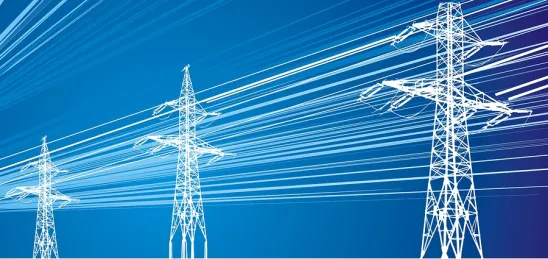The domestic content bonus credit (the DC Bonus), which was introduced by the Inflation Reduction Act of 2022 (the IRA), provides an enhanced tax credit for renewable energy and storage projects constructed with sufficient US-sourced materials and components (the Domestic Content Requirement). The DC Bonus is available for projects that qualify for the production tax credit (PTC) under Section 45 of the Internal Revenue Code of 1986, as amended (the Code), the investment tax credit (ITC) under Section 48 of the Code, the clean electricity production credit (CEPC) under Section 45Y of the Code, or the clean electricity investment credit (CEIC) under Section 48E of the Code.[1]
On May 12, 2023, the Treasury Department and Internal Revenue Service (IRS) issued Notice 2023-38 (the Notice), providing various rules relating to the application of the Domestic Content Requirement, including associated certification and record-keeping requirements, under consideration for incorporation into forthcoming proposed regulations.The Notice states that such proposed regulations are intended to apply to taxpayers’ taxable years ending after May 12, 2023. Taxpayers may rely on the rules set forth in the Notice, however, for any projects that commence construction before the date that is 90 days after the date that proposed regulations on the DC Bonus are published in the Federal Register.
As further described below, the Notice addresses four topics:
- Guidance on the application of the Domestic Content Requirement;
- Safe harbor classifications for certain components of a project;
- Application of the Domestic Content Requirement to retrofitted projects; and
- Description of applicable self-certification and substantiation requirements.
The DC Bonus Under the IRA
Under the IRA, the DC Bonus is available for (i) a qualified facility for which the PTC or CEPC is claimed, (ii) an energy property for which the ITC is claimed, and (iii) a qualified investment with respect to a qualified facility or energy storage technology for which the CETC is claimed (collectively, Applicable Projects). If the Domestic Content Requirement is met, a taxpayer is eligible for a 10 percent increase in the PTC or CEPC rate (e.g., an increase from 3 cents to 3.3 cents per kilowatt hour) or a 10 percentage point increase in the ITC or CEIC rate (e.g., an increase from 30 percent to 40 percent), as applicable.[2] In order to satisfy the Domestic Content Requirement, the taxpayer must be able to certify that any steel, iron, or manufactured product which is a component of the Applicable Project is produced within the United States.
With respect to steel and iron, the regulations issued by the Federal Transit Administration under the Build America, Buy America Act (the Build America Requirements) are adopted as a basis for applying the Domestic Content Requirement. Generally, under the Build America Requirements, steel and iron used in construction materials for the infrastructure of a project, but not in components or sub-components of manufactured products, must be manufactured in the United States, excluding metallurgical processes involving the refinement of steel additives. For manufactured products which are components of an Applicable Project, the Domestic Content Requirement will be deemed satisfied if not less than the “Adjusted Percentage” of the total costs of all such manufactured products of the Applicable Project are attributable to manufactured products (including components) which are mined, produced, or manufactured in the United States (the Adjusted Percentage Rule). The Adjusted Percentage initially is 40 percent (20 percent for offshore wind projects), ultimately increasing to 55 percent.
Guidance on Application of Domestic Content Requirement
Definitions
The Notice provides a number of definitions for purposes of its guidance on the Domestic Content Requirement, including:
- A “Manufactured Product” is any item produced as a result of a “Manufacturing Process.”
- A “Manufacturing Process” involves the application of processes to alter the form or function of materials, or of elements of a product, in a manner that adds value and transforms those materials or elements such that they represent a functionally different item (i.e., more than mere assembly).
- An “Applicable Project Component” is any article, material, or supply, whether manufactured or unmanufactured, that is directly incorporated into an Applicable Project as steel, iron, or a Manufactured Product.
- A “Manufactured Project Component” is any article, material, or supply, whether manufactured or unmanufactured, that is directly incorporated into an Applicable Project Component that is a Manufactured Product.
Steel or Iron Requirement
The Notice does not provide substantial guidance with respect to steel and iron beyond affirming use of the Build America Requirements in applying the Domestic Content Requirement. Thus, all manufacturing processes with respect to steel or iron items that are Applicable Project Components must take place in the United States, except metallurgical processes involving the refinements of steel additives. Further, the Notice provides that, consistent with the Build America Requirements, the steel or iron requirement applies only to construction materials that are primarily made of steel or iron. In addition, the Notice confirms that the steel or iron requirement applies only to such materials that are structural in function. Steel or iron used in Manufactured Product Components or their sub-components (e.g., nuts and bolts) are not subject to this requirement.
Manufactured Product Requirement
In contrast to the limited guidance for steel and iron, the Notice provides specific rules for calculating the percentage of a Manufactured Product that is considered to be produced in the United States for purposes of the Adjusted Percentage Rule.
“Manufactured Products” initially are divided between “US Manufactured Product” and “Non-US Manufactured Product.” In order to constitute a US Manufactured Product, (i) all of the manufacturing processes for the Manufactured Product must take place in the United States and (ii) all of the Manufactured Product Components must be of US origin. Notably, a Manufactured Product Component is considered to be of US origin, regardless of the origin of its sub-components. In other words, the manufacturing location for sub-components of Manufactured Product Components is not taken into account for this purpose, so any and all sub-components may be derived from foreign sources. A Manufactured Product that does not qualify as a US Manufactured Product is considered to be a Non-US Manufactured Product, even if some, and possibly substantially all, of its Manufactured Product Components are produced in the United States.
Next, the Notice requires the calculation of a “Domestic Cost Percentage” for the Applicable Project, which must equal or exceed the Adjusted Percentage in effect for the taxable year in which the Applicable Project commences construction in order to satisfy the Domestic Content Requirement. The Domestic Cost Percentage is calculated as follows:
- The sum of (1) the total costs of US Manufactured Products and (2) the total costs of Manufactured Product Components of Non-US Manufactured Products that are mined, produced, or manufactured in the United States (each, a US Component), divided by:
- The total costs of all Applicable Project Components of Manufactured Products included in the Applicable Project.
As so stated, for purposes of the Domestic Cost Percentage, taxpayers are allowed to take into account as “domestic content” (i) the costs of a Manufactured Product that is entirely produced within the United States, (ii) the costs of U.S. Components of a Manufactured Product that is produced in the United States but includes components of foreign origin, and (iii) the costs of US Components of a Manufactured Product that is produced outside the United States.[3] Developers have reacted favorably to this aspect of the Notice, particularly item (iii), which allows US Components of Manufactured Products produced outside of the United States to increase a developer’s Domestic Cost Percentage for an Applicable Project. For certainty with respect to the Domestic Cost Percentage, however, a developer will be required to seek information and assurances from its suppliers regarding the origin and cost of their materials, and contractual remedies if this information is inaccurate, both of which may represent a challenge to negotiate.
In determining the costs that are included in the Domestic Cost Percentage, the Notice looks only to the direct costs of materials and direct labor costs paid or incurred (within the meaning of Section 461 of the Code) by the manufacturer of the Manufactured Products. Thus, an allocation of overhead and other indirect costs is not counted for this purpose. Additionally, direct costs of incorporating Applicable Project Components into the Applicable Project (i.e., assembly) are not counted.
Safe Harbor Classifications of Certain Applicable Project Components
In order to assist taxpayers in the evaluation of Applicable Product Components under the Domestic Content Requirement, the Notice includes a table (Table 2) that presumptively classifies a non-exhaustive list of Applicable Product Components related to renewable energy projects as between steel/iron and Manufactured Products. The safe harbor classifications were identified with the assistance of the Department of Energy and cover utility-scale solar projects, onshore and offshore wind facilities, and energy storage technologies. Examples of steel/iron in Table 2 include steel photovoltaic module racking for solar projects, towers for wind facilities, and steel/iron rebars in foundations for energy storage. Examples of Manufactured Product in Table 2 include photovoltaic module and inverter for solar projects, wind turbine and wind tower flanges for wind facilities, and battery pack and battery housing for energy storage.
The Notice states that the IRS will accept the classifications set forth in Table 2, although taxpayers presumably could assert a different position at the risk of an IRS challenge.
Retrofitted Projects
In accordance with long-standing guidance on tax credits for renewable energy projects, the Notice adopts the so-called “80-20 Rule” in making the DC Bonus available to existing Applicable Projects that are refurbished with new, credit-eligible equipment. Under the 80-20 Rule, an existing Applicable Project will be considered newly placed in service for tax credit purposes as long as all used property included in the project represents no more than 20 percent of the fair market value of the project after its refurbishment, with 80 percent or more of such fair market value represented by costs properly included in the depreciable basis of new property. Under the Notice, a taxpayer can qualify for the DC Bonus if the 80-20 Rule is met and the new property included in the refurbished Applicable Project complies with the Domestic Content Requirement.
Self-Certification and Substantiation Requirements
Self-Certification
The IRA generally requires taxpayers to certify their satisfaction of the Domestic Content Requirement as a precondition to claiming the DC Bonus (the Domestic Content Certification Statement). The Notice provides some details as to the information to be provided on the Domestic Content Certification Statement, and provides that the Domestic Content Certification Statement must be signed by an authorized person under penalties of perjury. The taxpayers must make the requisite certifications as of the date that the Applicable Project is considered to be placed in service, which generally means the date on which it is placed in a condition or state of readiness and availability for a specifically assigned function.[4]
Substantiation
Finally, the Notice reminds taxpayers of the need to comply with the substantiation requirements of Section 6001 of the Code in order to support their claims of the DC Bonus. Section 6001 of the Code generally contemplates the retention of all books and records that may be relevant to the IRS in its evaluation of the claim of the DC Bonus. The retention requirement would continue for so long as the relevant books and records are material in the administration of federal tax laws (i.e., the applicable statute of limitations).
FOOTNOTES
[1] The PTC and ITC are available for projects placed in service after December 31, 2022, provided that construction of the project commences before January 1, 2025, while the CEPC and CEIC are available for projects placed in service after December 31, 2024.
[2] The increase in the ITC or CEIC is limited to two (2) percentage points unless the taxpayer complies with the prevailing wage and apprenticeship requirements, or qualifies for an exception from such requirements, with respect to the Applicable Project.
[3] The Notice contains a helpful example that shows how the Domestic Cost Percentage is applied when an Applicable Project includes Non-US Manufactured Products with US Components.
[4] In the case of energy generation facilities, case law and IRS authorities typically consider whether the following events have occurred to determine whether a facility is “placed in a state of readiness and availability for a specifically assigned function” (i) the approval of required licenses and permits for the facility, (ii) passage of control of the facility to the applicable project company, (iii) completion of critical tests, (iv) commencement of daily or regular operations, and (v) synchronization into a power grid for generating electricity to produce income. No single factor is intended to be dispositive.





 />i
/>i

